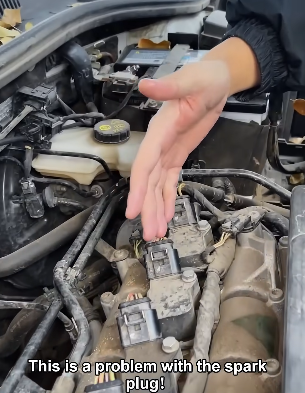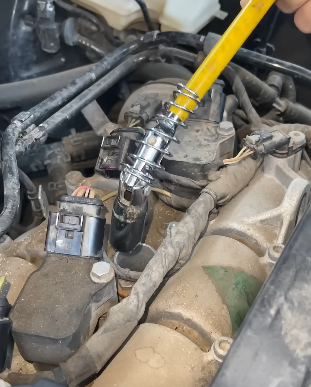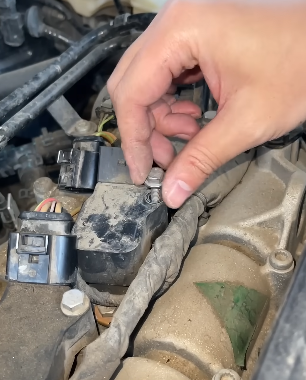
Few things are more frustrating than turning the key in the ignition and finding that your car won’t start. Whether you’re in a hurry or just trying to get to work, a non-starting car can be a major inconvenience. Fortunately, most starting issues can be diagnosed and fixed with some basic troubleshooting. In this guide, we’ll walk through the most common reasons why a car won’t start and how to solve them.
1. Check the Battery
The battery is one of the most common reasons a car won’t start. If your battery is dead or weak, your car may not turn over at all or may crank very slowly.
Signs of a Dead Battery:
- Clicking sound when turning the key
- Dim dashboard lights or no lights at all
- Electrical components like the radio and windows not working
Solutions:
- Jump-start the car using jumper cables and another vehicle with a charged battery.
- Check the battery terminals for corrosion and clean them if necessary.
- Test the battery voltage with a multimeter (a healthy battery should read around 12.6 volts when the car is off and 13.7-14.7 volts when running).
- Replace the battery if it is old (typically over 3-5 years) or won’t hold a charge.
2. Inspect the Starter Motor
The starter motor is responsible for cranking the engine. If it’s faulty, the car won’t start.
Signs of a Bad Starter:
- A clicking noise when you turn the key
- The engine doesn’t turn over, even with a charged battery
- Smoke or a burning smell from the starter area
Solutions:
- Tap the starter motor lightly with a wrench or hammer; sometimes, this can temporarily fix the issue.
- Check the wiring to the starter to ensure it’s properly connected.
- Replace the starter motor if it is completely worn out.

3. Check the Fuel System
If your car isn’t getting fuel, it won’t start.
Signs of a Fuel System Issue:
- Engine cranks but doesn’t start
- Strong fuel smell or no fuel smell at all
- No sound from the fuel pump when turning the key
Solutions:
- Check the fuel level to ensure you’re not out of gas.
- Listen for the fuel pump when turning the key (it should make a faint humming noise).
- Replace the fuel filter if it’s clogged.
- Inspect fuel injectors for clogs or leaks.
4. Examine the Ignition System
The ignition system includes spark plugs, ignition coils, and the ignition switch. If any of these fail, the car won’t start.
Signs of an Ignition Problem:
- Engine cranks but doesn’t start
- No spark when testing the spark plugs
- Engine misfires before refusing to start
Solutions:
- Check the spark plugs and replace them if they’re worn or covered in carbon.
- Inspect ignition coils and replace faulty ones.
- Test the ignition switch using a multimeter.

5. Verify the Security System
Modern cars have anti-theft systems that can prevent them from starting if the system is triggered.
Signs of a Security System Issue:
- The dashboard security light is flashing
- Key fob doesn’t unlock the car
- Car won’t start even with a working battery
Solutions:
- Try using a spare key in case the original key’s chip is faulty.
- Reset the security system by locking and unlocking the car manually.
- Check the key fob battery and replace it if necessary.
6. Look for Mechanical Issues
Sometimes, internal engine problems can prevent a car from starting.
Signs of a Mechanical Issue:
- Engine won’t turn over at all
- Loud knocking or clunking noise before failure
- Visible leaks or broken belts
Solutions:
- Check the timing belt for signs of wear or breakage.
- Inspect the engine for leaks or physical damage.
- Consult a mechanic for internal engine problems.

7. Check the Alternator
If your alternator isn’t working properly, your battery won’t charge, and the car may not start.
Signs of a Bad Alternator:
- Car starts but then dies shortly after
- Dimming lights when driving
- Battery warning light on the dashboard
Solutions:
- Test the alternator with a multimeter (it should produce 13.7-14.7 volts when running).
- Replace the alternator if it’s faulty.
Final Thoughts
A car that won’t start can be caused by several factors, from a dead battery to engine failure. By systematically checking the battery, starter, fuel system, ignition system, security system, and alternator, you can often diagnose and fix the issue yourself. If all else fails, consult a professional mechanic to ensure your car gets the proper repair.
Following these steps can save you time and money while preventing unnecessary breakdowns in the future.


